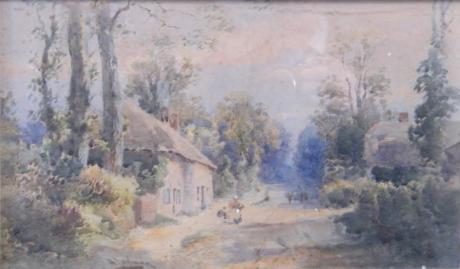The site at Lady Margaret's Medieval Hall dates back to the 11th century. Founded by the French knight William de Tracey, known to have been one of the assassins of Thomas a Becket, Archbishop of Canterbury.Formerly St Margaret's Chapel, her origins range from Leper hospital to Almshouses, forming a group with the cottages next door on the same site.In the early 1500's the existing structures were seriously deteriorating. Thomas Chard, Abbot of Forde, restored the buildings, enlarging the leper house and governor's quarters and in 1530, the present chapel was erected.By the late 18th century the need for a leper hospital no longer existed and the complex was used to house poor, elderly people as Almshouses. In 1807, four new homes were built with the side wings on the original central cottage on the north side of the road being added. The governor of these Almshouses was required to read prayers to the residents twice a week in the chapel.
Leyman was born in Summerland Street in Exeter in 1856 and was the son of John Francis Leyman, a seaman in the Merchant Service. He moved to Honiton in 1888 and became Art Master at Allhallows School in 1893, a post he filled for forty years until 1933. This seems an extraordinary feat based on the evidence of one pupil who said that Leyman 'had no real teaching ability and he would have been happier alone with his easel, and away from the gathering of rowdy boys'.He seldom left Devon, with the exception of short trips to West Dorset and Somerset, to places like Porlock and Lynton. He supplemented his teaching income by painting popular resorts for the visitors and we regularly see Leyman watercolours of The Guildhall in Exeter, The Butterwalk in Dartmouth, Dittisham, cottages in Clovelly and the street in Otterton.In the period Leyman was at his most prolific, Elands Art Gallery in Exeter were showcasing local artist and staged biannual exhibitions, one in April and one in August. In 1906 sixteen Leyman watercolours were shown and one still finds authentic Eland Gallery labels attached to the old backing boards of Leyman watercolours. Elands were in fact more booksellers than art dealers and the business continued until 2006 when the premises at Mol's Coffee House in Exeter were closed for the last time. I mention this because Frank and Fowler Eland, who were contemporaries of Leyman, did their bookselling apprenticeships with Messrs Bumpus & Bumpus, "the booksellers of Old London Town", and any business with a name like that surely warrants a mention.

